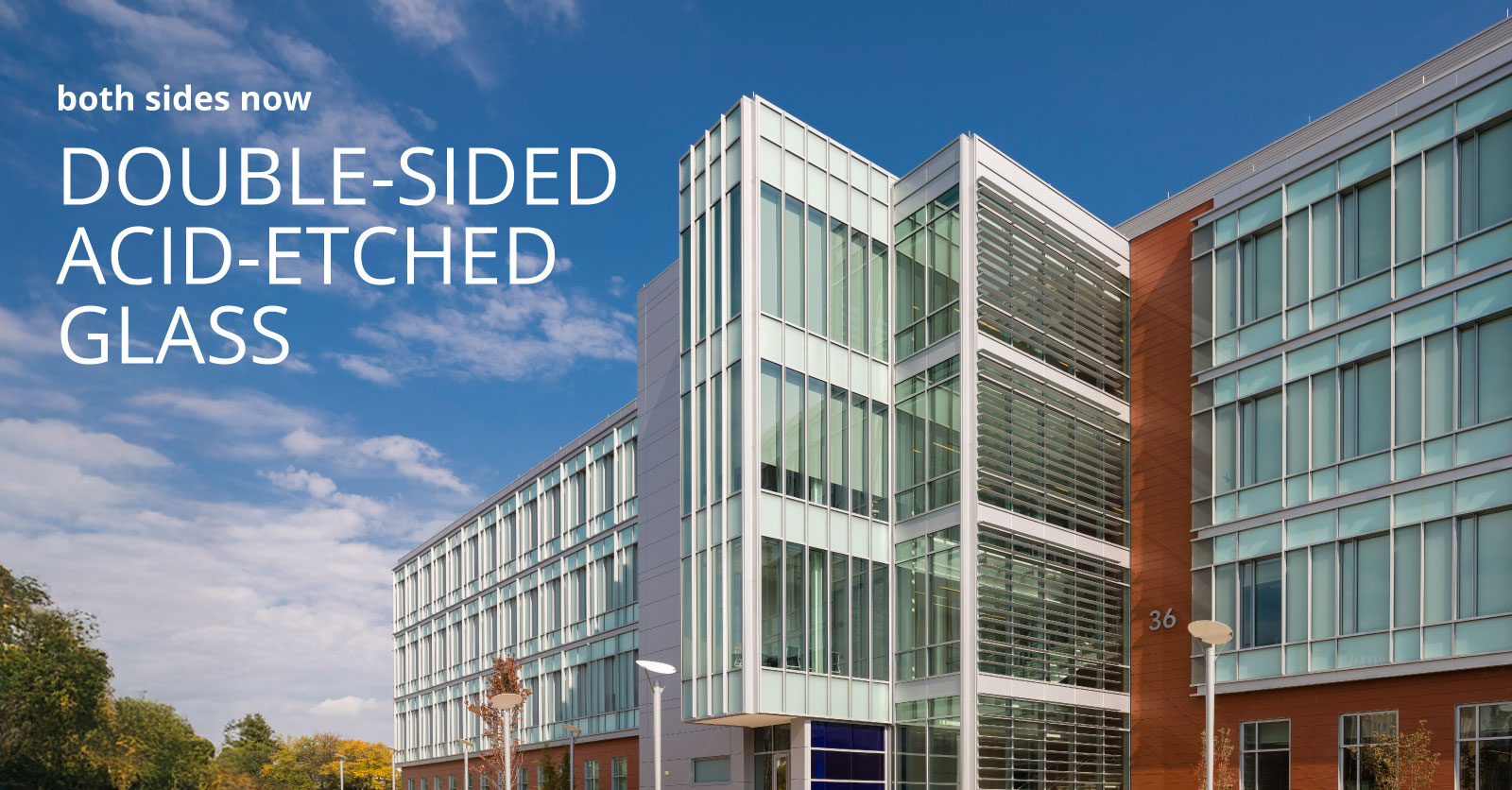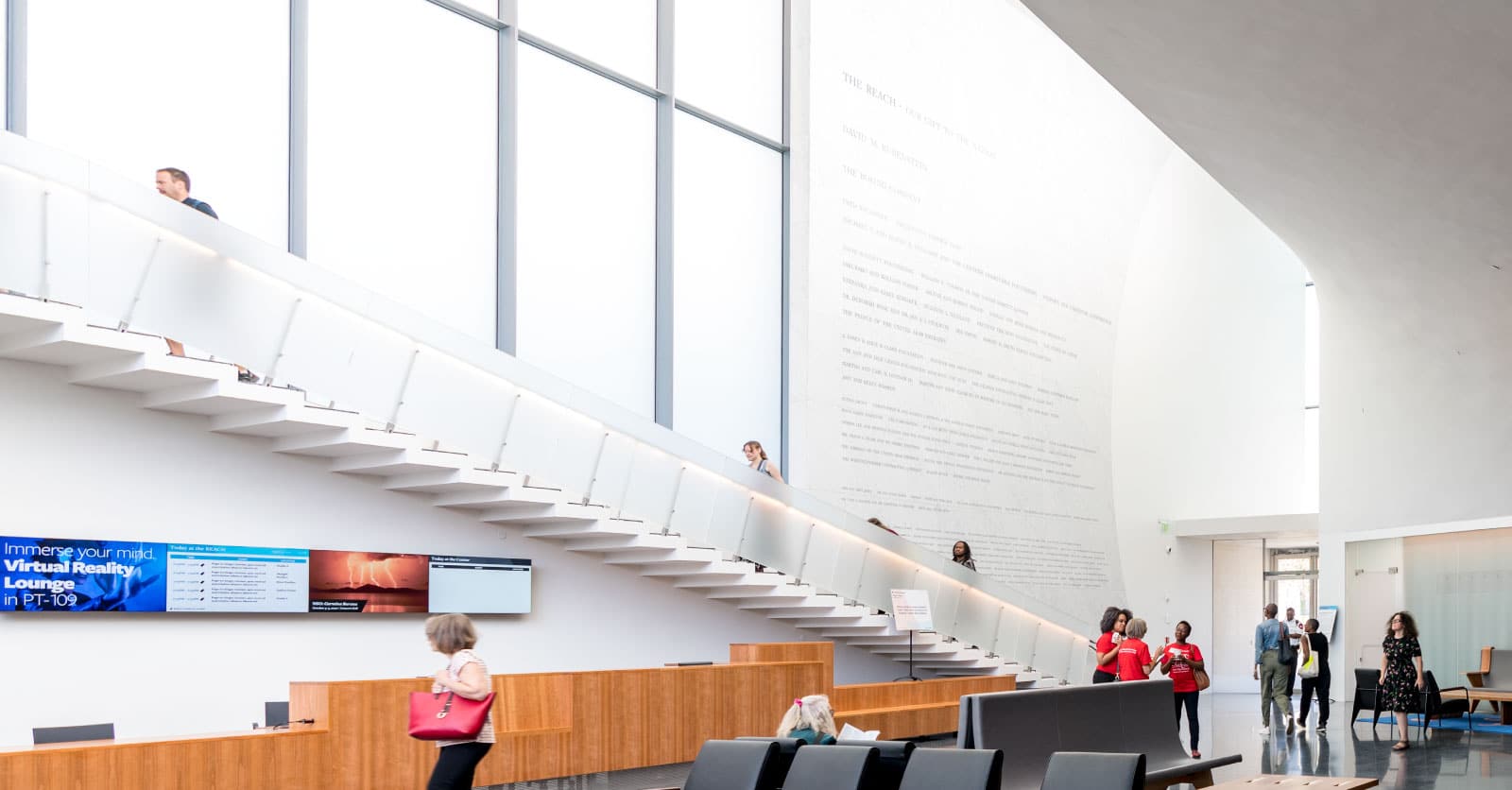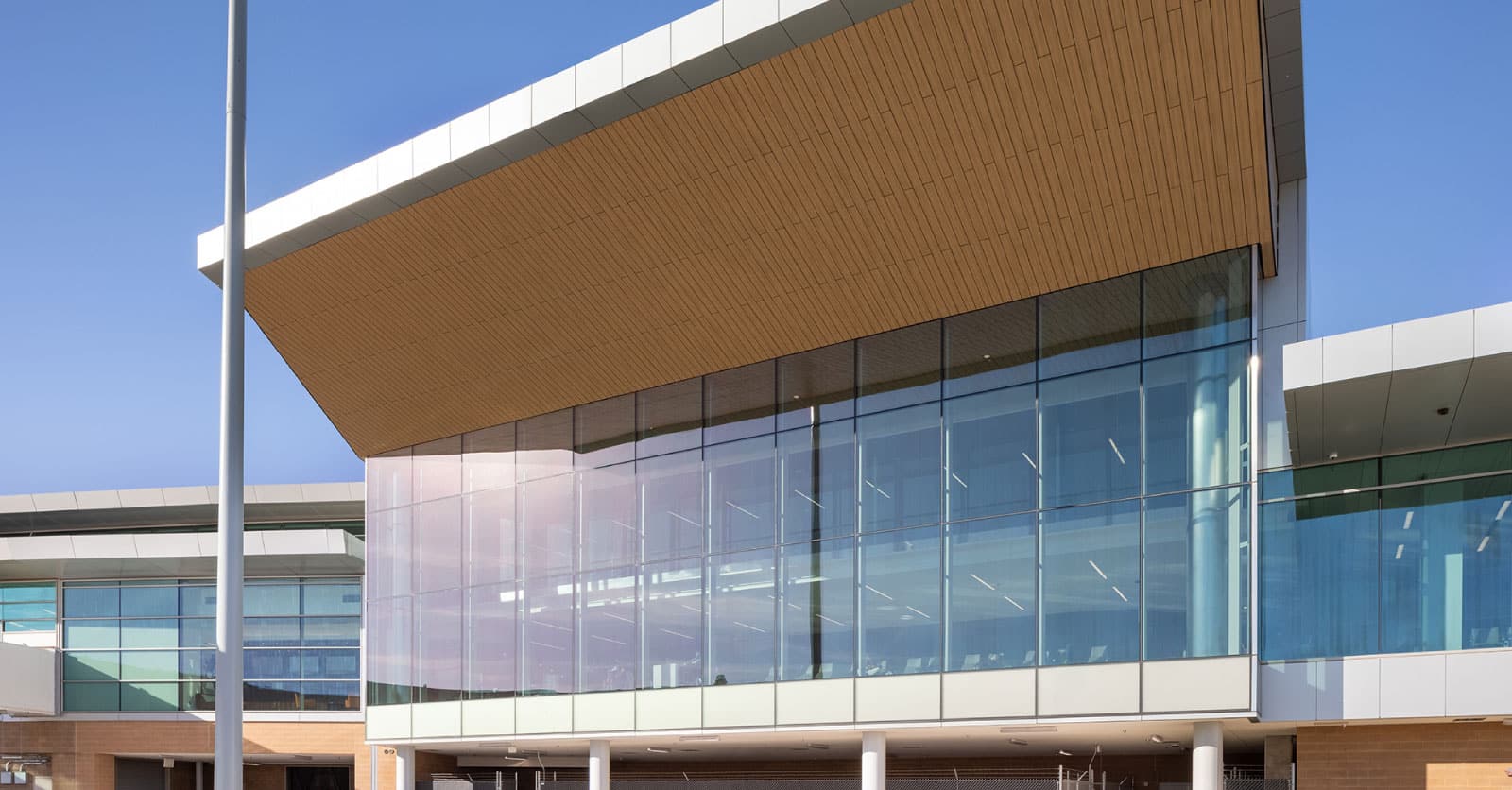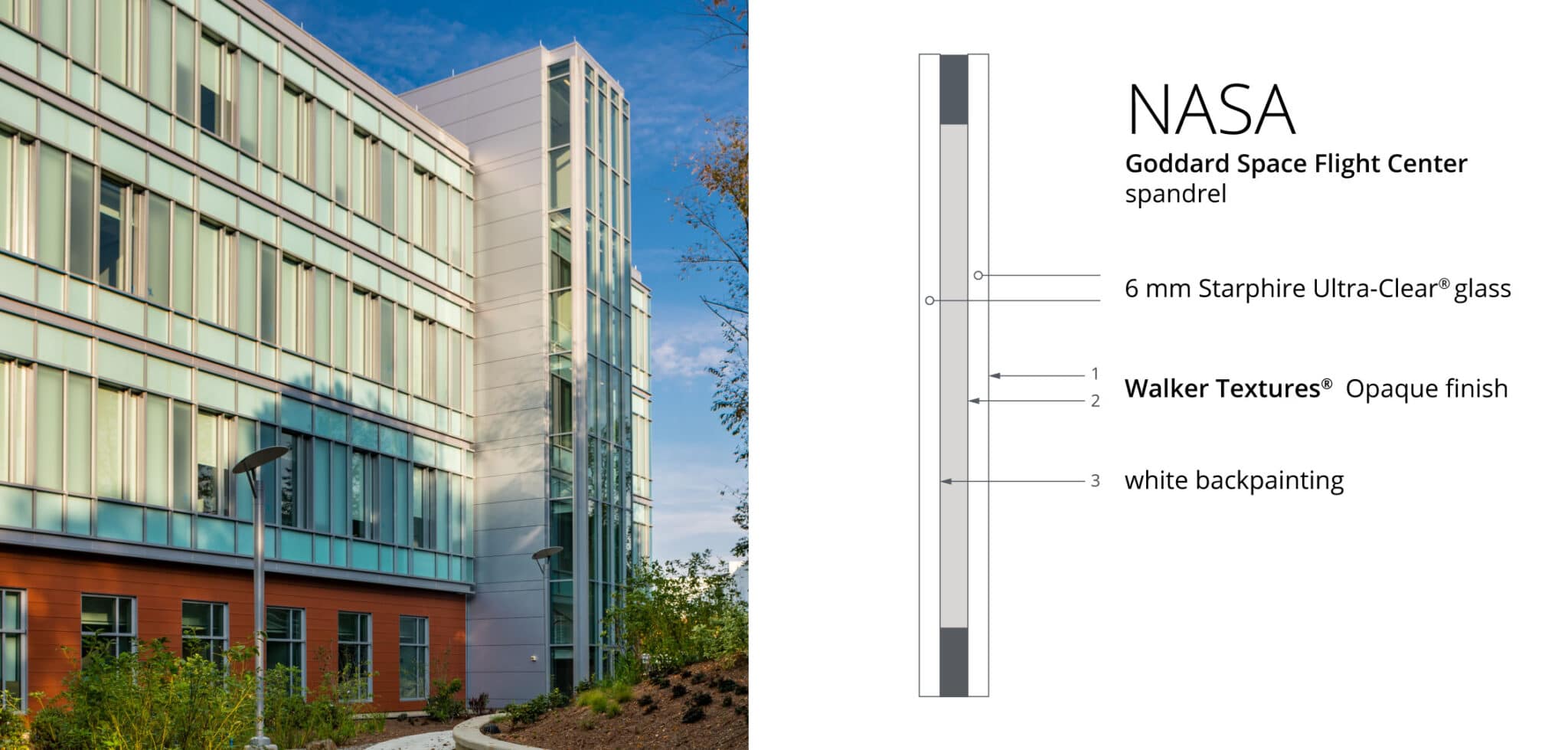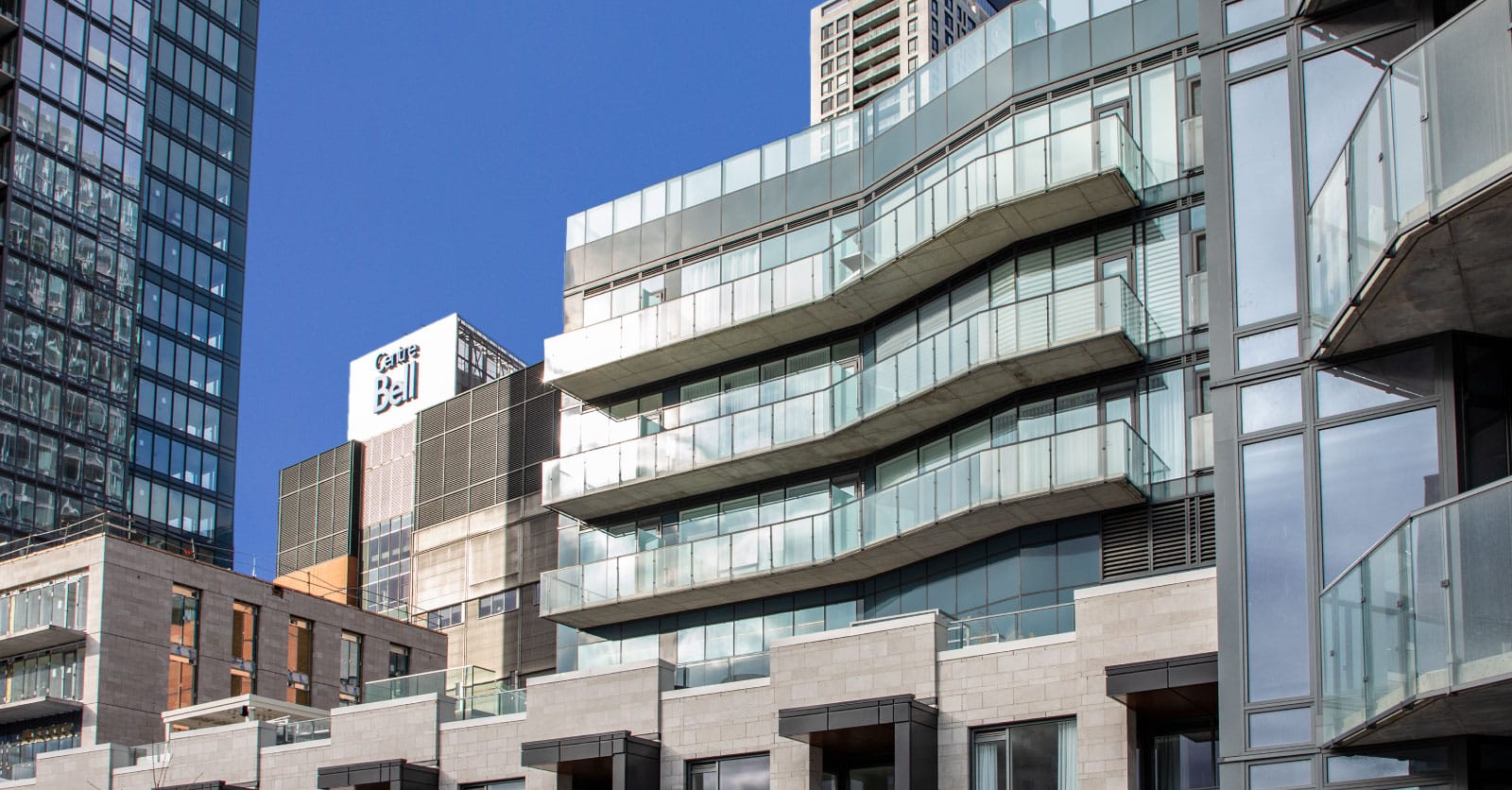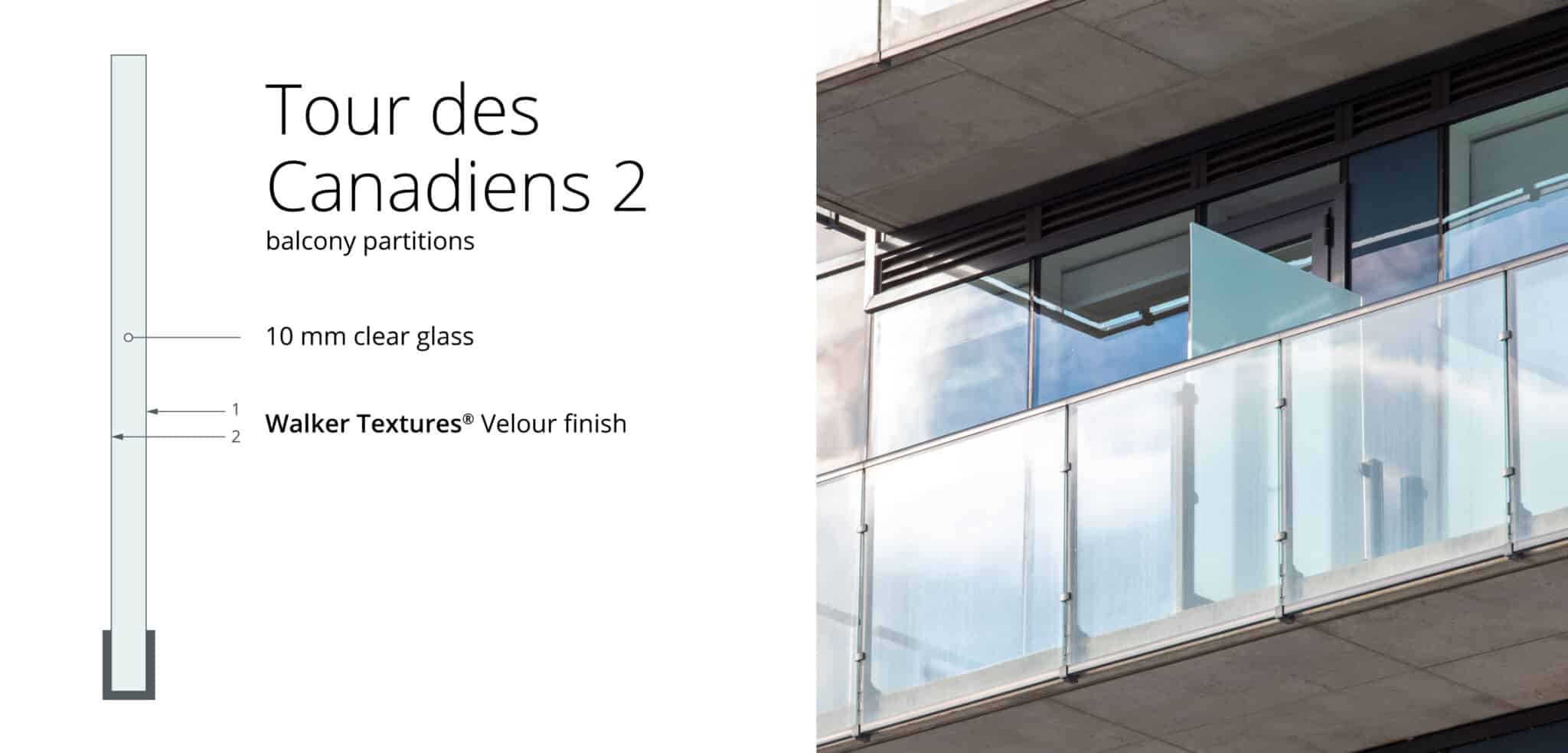In the world of architecture and design, being “two-faced” takes on an entirely new, positive meaning, especially when it comes to double-sided acid-etched glass. Far from a negative connotation, a second etched surface has become a cutting-edge trend, transforming buildings from ordinary to extraordinary and providing architects with an expanded toolkit to bring their grand visions to life. Beyond its striking aesthetic, this innovative glass offers enhanced opacity, optimizing privacy and diffusing natural light precisely where it’s most needed. This article will explore compelling projects that showcase the remarkable capabilities of double-sided acid-etched glass, along with a practical checklist of best practices for its successful integration into your designs.
What is double-sided acid-etched glass?
Producing double-sided etch, or two-faced etch, involves subjecting both faces of a pane of glass to an etching process. In the case of Walker Textures® acid-etched glass, that means exposing each flat surface in turn to an acid-etching process. The four narrow edges are left untreated. If desired, multiple panes of double-sided etched glass can be combined for increased effect.
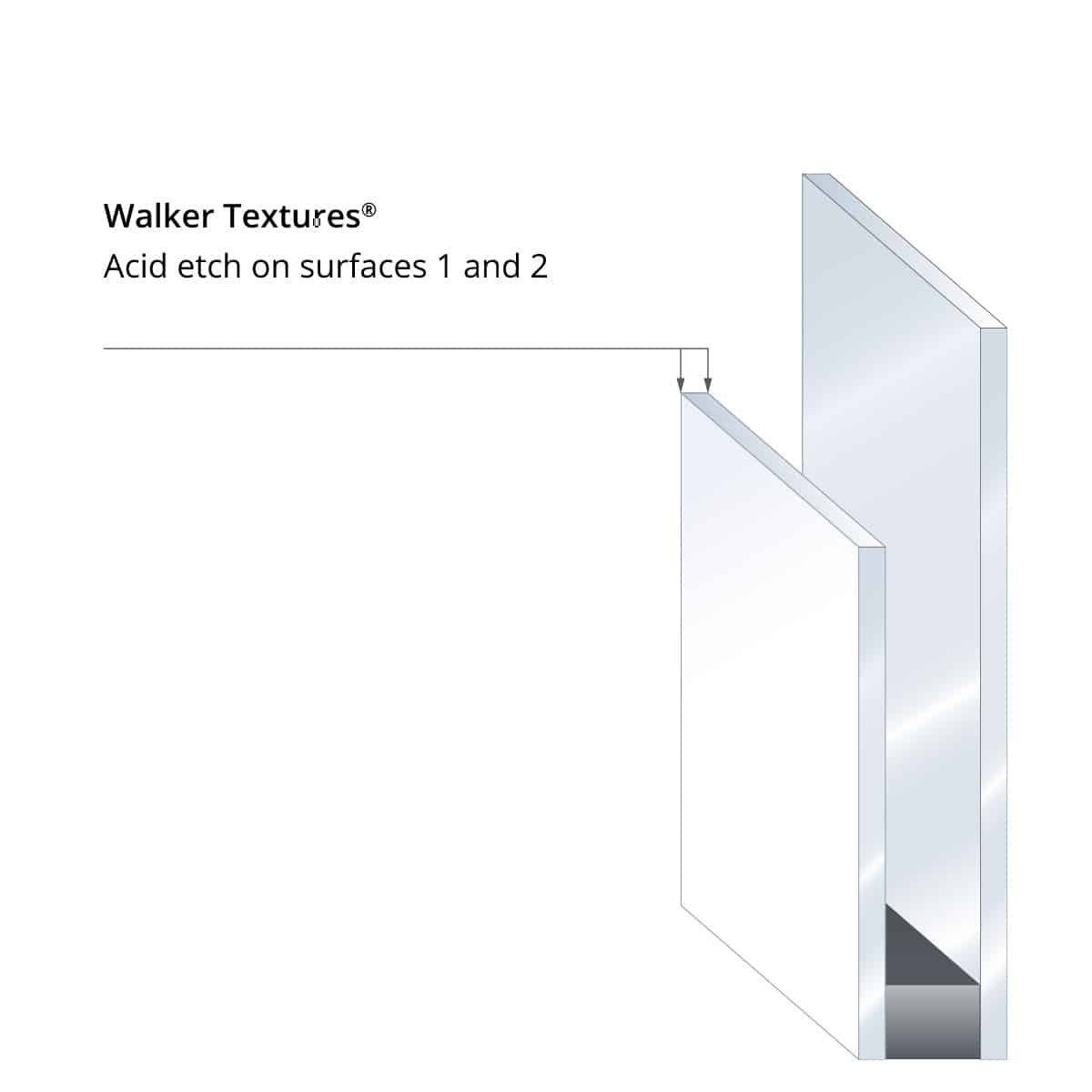

Why use double-sided etched glass?
Apart from the aesthetic impact, there are plenty of practical reasons to choose a two-faced etch.
Reducing glare
Adding a second (or third, or fourth) etched surface to a building’s windows and skylights can improve daylighting dramatically, easing the visual discomfort caused by glare. It’s important to note that, even as etched glass reduces glare and harsh sunlight, it still delivers high visible light transmittance. This property makes double-sided etched glass a great candidate for skylights and other important sources of natural light.
Adding privacy
While transparency has been instrumental in the popularity of glass as a building material, that doesn’t mean it should always provide clear visibility. Stair and balcony railings, for example, can benefit from a bit of opacity while still allowing daylight to pass through. So can interior dividers, especially if they have the potential to affect the lighting inside a building. For this reason, you’ll often see etched glass in stair rails, balcony walls, and office partitions. Since double-sided etched is even less transparent than single-sided etched glass, it’s particularly apt for any context where privacy is a consideration.
Looking good from both sides
Having two identical surfaces makes double-sided etched glass ideal for applications where both sides of the glass are on display. Think of railings, partitions, interior walls, desk tops, and anywhere else you’d want the two sides of the glass to match.
Impression of depth
As with other translucent and transparent materials, the appearance of double-sided acid-etched glass has a lot to do with its surroundings. Two-faced etched glass can give intriguing impressions of depth when placed in front of other elements like daylight features, textural walls, and interactive elements.
Best practices for designing with double-sided acid-etched glass
Double-sided etched glass can be a powerful design tool with many practical benefits. As with anything, though, there are some considerations to keep in mind when using this material. Here’s your checklist to make sure you get the best results from two-faced acid-etched glass.
1. Commit to one etch finish
The difference between acid-etched finishes can be subtle, and panes can be inadvertently reversed or mis-positioned during installation. By committing to a single finish for the entire project, you can help your installation team work more efficiently without concerns about which surface should face outwards. This simple step can reduce the time, money and risk of human error.
2. Select the right finish for your design
The finish you choose will affect the overall look of your building. An Opaque finish, as its name suggests, creates the highest level of opacity. Velour, our most popular etched finish, offers a medium level of opacity while a Satin finish yields a more subtle effect with a hint of reflectivity. With these three finishes to choose from, you’ll be sure to find the right solution for your project. The finish you choose is up to you – just make sure to use the same one throughout the project!
3. Plan your glass treatments strategically
Acid etched glass is often combined with treatments such as laminates, back-paint and low-e coatings. It’s important to take these into account when incorporating a second etched surface. If your project used a low-e coating, for example, you’ll have to decide whether you can place that coating on surface three of your insulated units and still meet your energy performance targets, since the low-e cannot be applied on the same surface as an etched finish. If you need the low-e on the second surface, you may be better off shifting the double-face etched glass to an interior lite. On the other hand, double-sided etch can be ideal for applications such as partitions, railings, and spandrel, which do not require energy-efficient coatings.
4. Show off the purity of low-iron glass
Double-side acid-etched glass is uniquely qualified to highlight a substrate like low-iron glass. The etched surfaces limit the reflection of surrounding colours, which shows off the purity of the glass. Use this combination to create a clean white look, or boost the drama by using a double-sided acid-etch on the first pane and colourful back-painting or laminates on the second. You can scroll down to see a selection of projects using double-sided acid-etched glass.
Fabrication best practices: tips for handling double-sided acid-etched glass
There are some standard rules of thumb for working with acid-etched glass: keep your equipment and workspace clean, test your settings on a sample piece before cutting the production pieces, and clean the glass after processing. The same rules apply to double-sided etched glass.
You can find more information and full handling details in our technical booklets for acid-etched glass.
Project highlights
We’ve covered the technicalities of two-faced etched glass and best practices for using it, but what about some real-life examples? After all, seeing is believing. Here’s a closer look at double-sided acid-etch glass compositions in buildings across North America. Click on the name of each site to discover more about the project and its glazing solutions.
The Kennedy Center for the Performing Arts: The REACH
Washington, DC
Application: stair and mezzanine railings of the Welcome Pavillion (main entrance)
Glass: 10 mm Starphire Ultra-Clear® glass with Walker Textures® Velour finish on surfaces 1 and 2
Architect: Steven Holl Architects
Will Rogers World Airport, Terminal Expansion
Oklahoma City, OK
Application: spandrel
Glass: 6 mm Starphire Ultra-Clear® glass with Walker Textures® Opaque finish on surfaces 1 and 2, back-painted in white on surface 4
Architect: FSB in collaboration with HOK
NYU Langone Emergency Department
New York City, NY
Application: curtainwall
Glass: 12 mm Starphire Ultra-Clear® glass with Walker Textures® Velour finish on surfaces 1 and 2
Architect: NBBJ – NYC
NASA, Goddard Space Flight Center
Greenbelt, MD
Application: spandrel
Glass: 6 mm Starphire Ultra-Clear® glass with Walker Textures® Opaque finish on surfaces 1 and 2, back-painted in white on surface 3
Architect: Aecom
H&M Flagship Store
Toronto, ON
Application: curtainwall
Glass: 8 mm Starphire Ultra-Clear® glass with Walker Textures® Opaque finish on all four surfaces
Architect: Petroff Partnership Architects
Tour des Canadiens
Montreal, QC
Application: balcony partitions, exterior
Glass: 10 mm clear glass with Walker Textures® Velour finish on surfaces 1 and 2
Architect: Beique Legault Thuot Architectes
When it comes to glass, having two sides can be a real advantage. Double-sided acid-etched glass offers enhanced performance and aesthetic versatility. It softens glare, adds privacy, creates visual richness, and supports bold architectural expression. This builds on the strengths of traditional acid-etched glass, with an added layer of refinement.
Now that you’re familiar with its benefits and applications, how might you put this type of glass to use? Whether you’re aiming for a luminous exterior like NASA’s Goddard Space Center or The REACH’s carefully calibrated privacy effect, dual-surface etching might be the key your next project’s aesthetic.
Curious to see the effect for yourself? Contact your Architectural Manager or request a sample online to get started.
Oh, and in case you were wondering … yes, we had Joni Mitchell’s classic “Both Sides Now” in mind when we wrote the title for this article.
